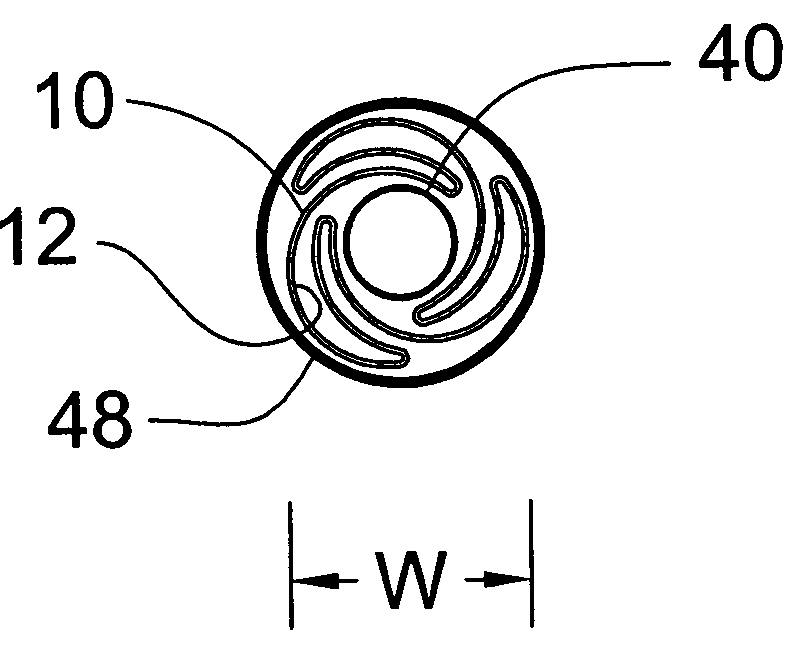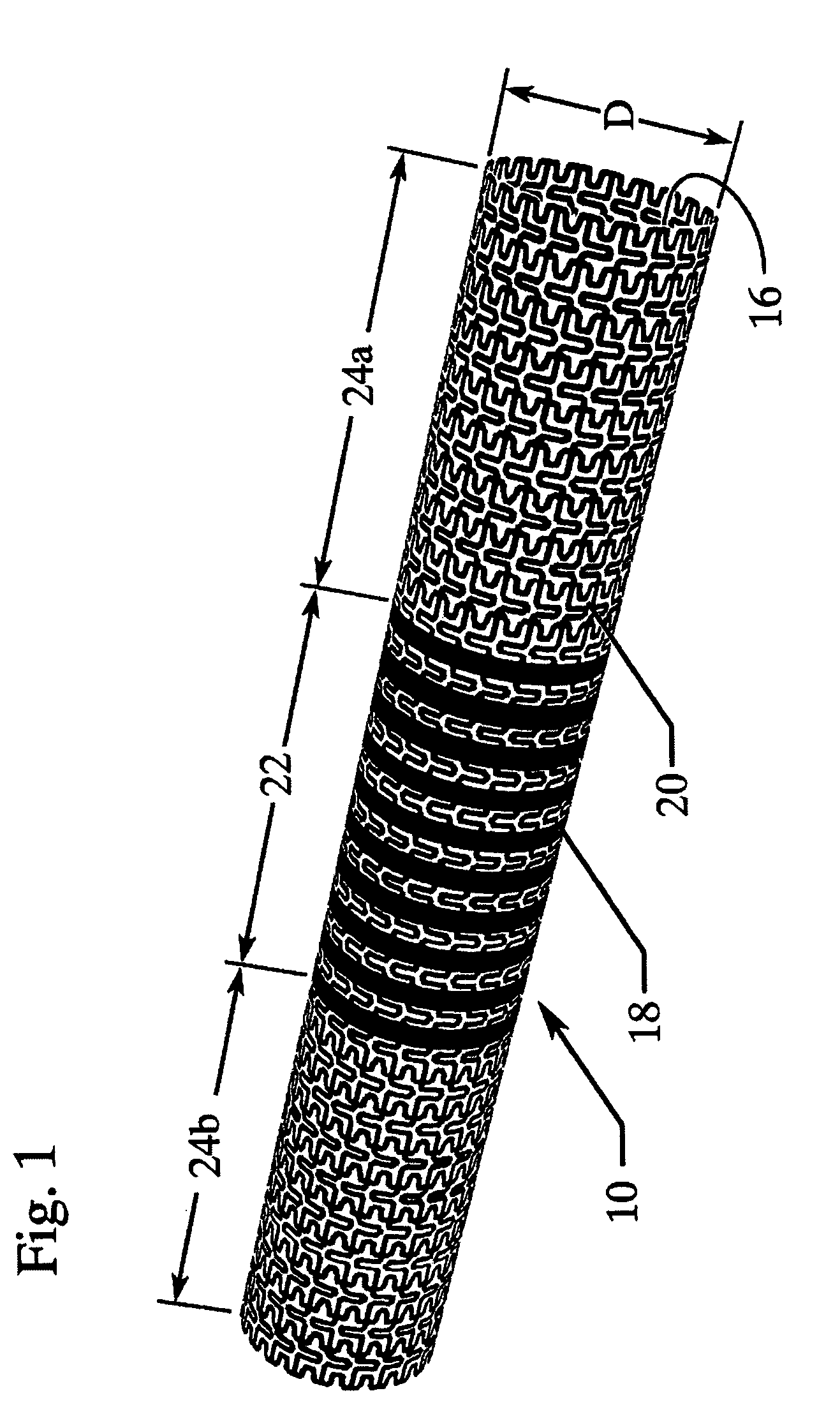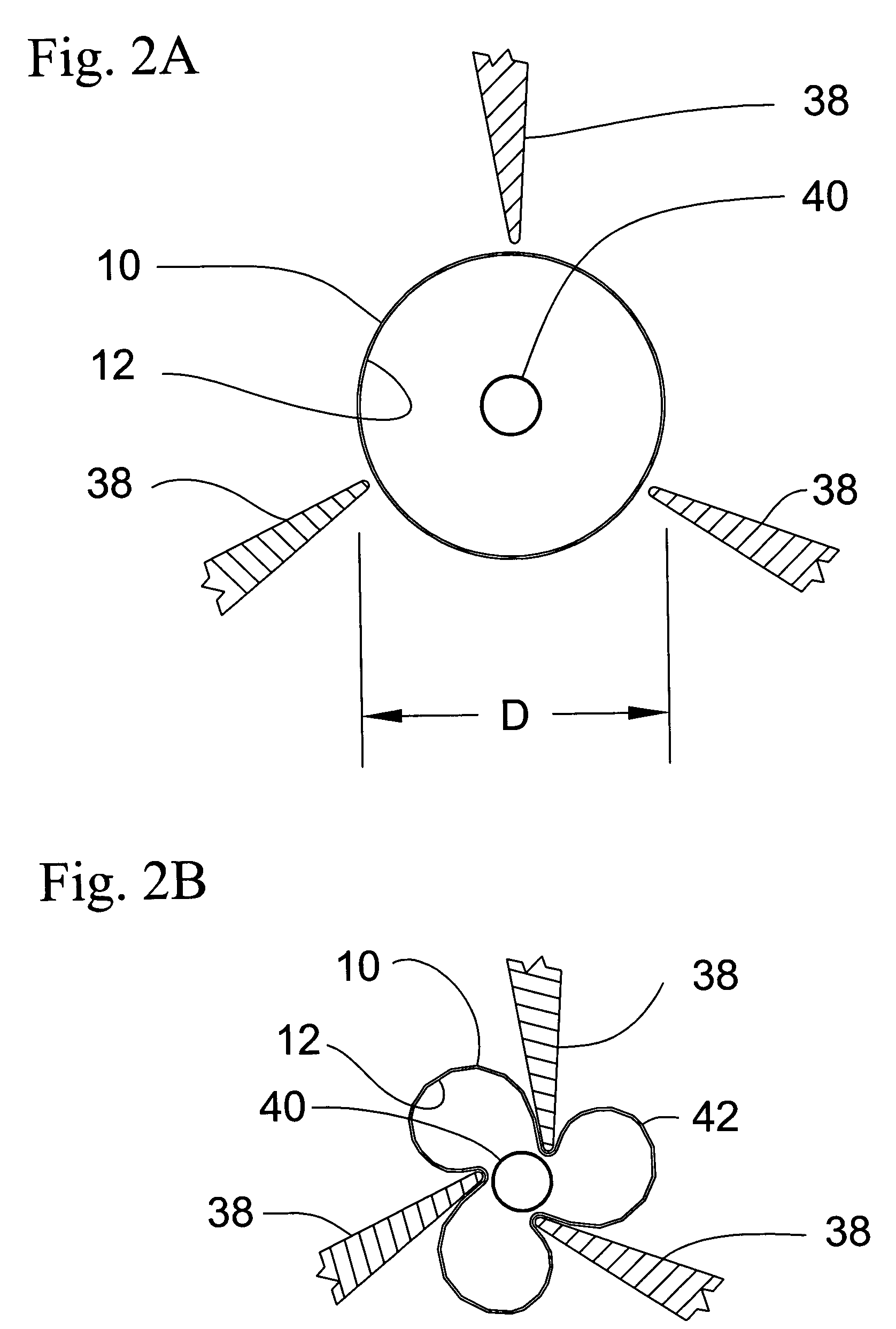Pleated stent assembly
- Summary
- Abstract
- Description
- Claims
- Application Information
AI Technical Summary
Benefits of technology
Problems solved by technology
Method used
Image
Examples
Embodiment Construction
[0030] The present invention is directed to a pleated medical device assembly comprising a tube co-pleated with a balloon. In the preferred embodiment depicted in the drawings, the medical device is a stent 10, as best shown in FIG. 1. Turning to FIGS. 2A, B and C, stent 10 is co-pleated with balloon 12 to form pleated stent assembly 14. Pleated stent assembly 14 comprises stent 10, having original diameter D, and balloon 12, wherein at least a portion of balloon 12 is contained within stent 10. Preferably, balloon 12 extends through the entire length of stent 10. Stent 10 is co-pleated with balloon 12 along longitudinal pleating lines to form a substantially cylindrical pleated tube / balloon assembly 14, having a delivery width W, less than original diameter D, and suitable for intraluminal delivery. Stent assembly 14 may be delivered to the target location in a body vessel using standard techniques well know in the art.
[0031] Once positioned at the desired target location within t...
PUM
 Login to View More
Login to View More Abstract
Description
Claims
Application Information
 Login to View More
Login to View More - R&D
- Intellectual Property
- Life Sciences
- Materials
- Tech Scout
- Unparalleled Data Quality
- Higher Quality Content
- 60% Fewer Hallucinations
Browse by: Latest US Patents, China's latest patents, Technical Efficacy Thesaurus, Application Domain, Technology Topic, Popular Technical Reports.
© 2025 PatSnap. All rights reserved.Legal|Privacy policy|Modern Slavery Act Transparency Statement|Sitemap|About US| Contact US: help@patsnap.com



